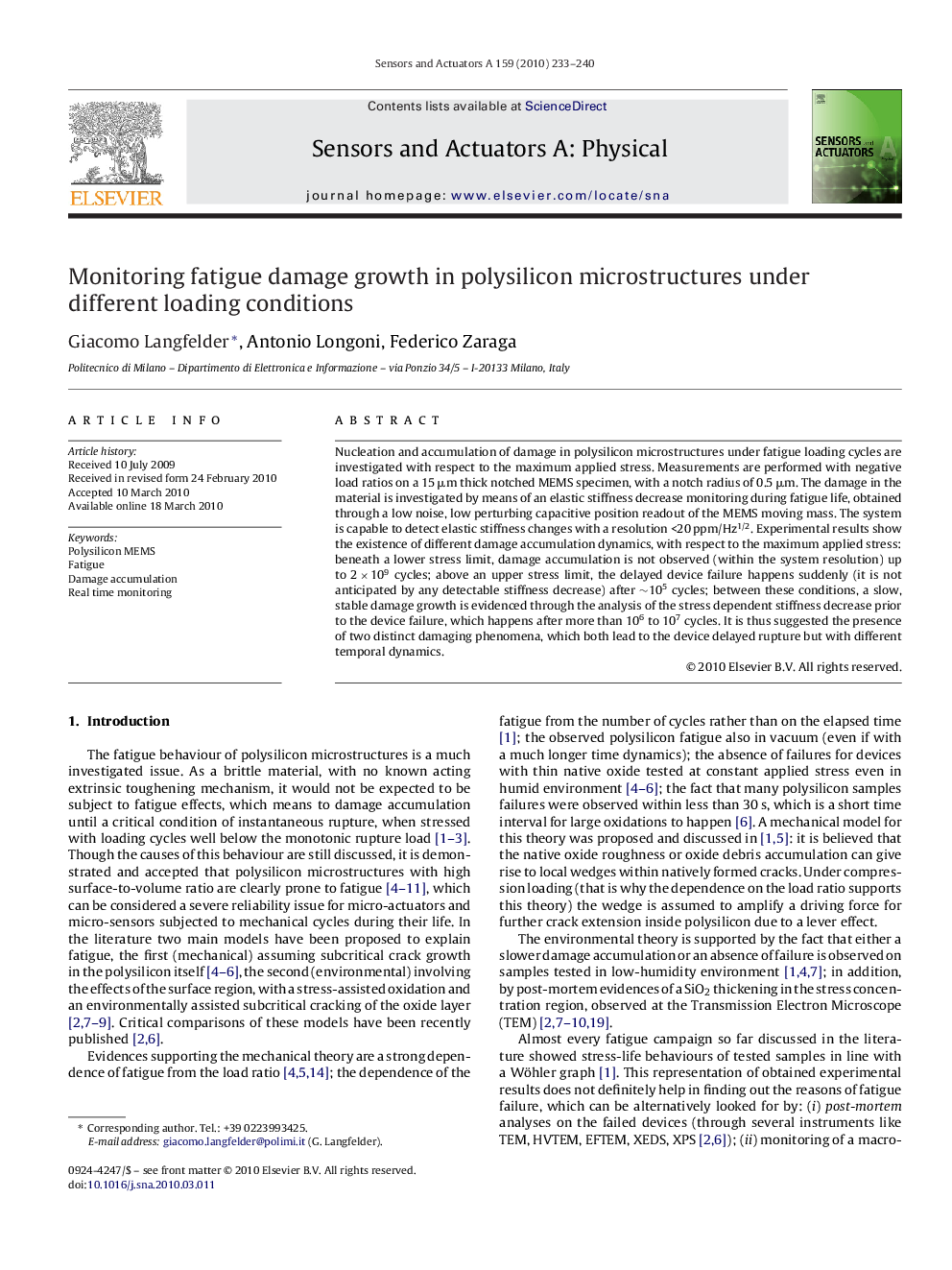| Article ID | Journal | Published Year | Pages | File Type |
|---|---|---|---|---|
| 736586 | Sensors and Actuators A: Physical | 2010 | 8 Pages |
Nucleation and accumulation of damage in polysilicon microstructures under fatigue loading cycles are investigated with respect to the maximum applied stress. Measurements are performed with negative load ratios on a 15 μm thick notched MEMS specimen, with a notch radius of 0.5 μm. The damage in the material is investigated by means of an elastic stiffness decrease monitoring during fatigue life, obtained through a low noise, low perturbing capacitive position readout of the MEMS moving mass. The system is capable to detect elastic stiffness changes with a resolution <20 ppm/Hz1/2. Experimental results show the existence of different damage accumulation dynamics, with respect to the maximum applied stress: beneath a lower stress limit, damage accumulation is not observed (within the system resolution) up to 2 × 109 cycles; above an upper stress limit, the delayed device failure happens suddenly (it is not anticipated by any detectable stiffness decrease) after ∼105 cycles; between these conditions, a slow, stable damage growth is evidenced through the analysis of the stress dependent stiffness decrease prior to the device failure, which happens after more than 106 to 107 cycles. It is thus suggested the presence of two distinct damaging phenomena, which both lead to the device delayed rupture but with different temporal dynamics.
